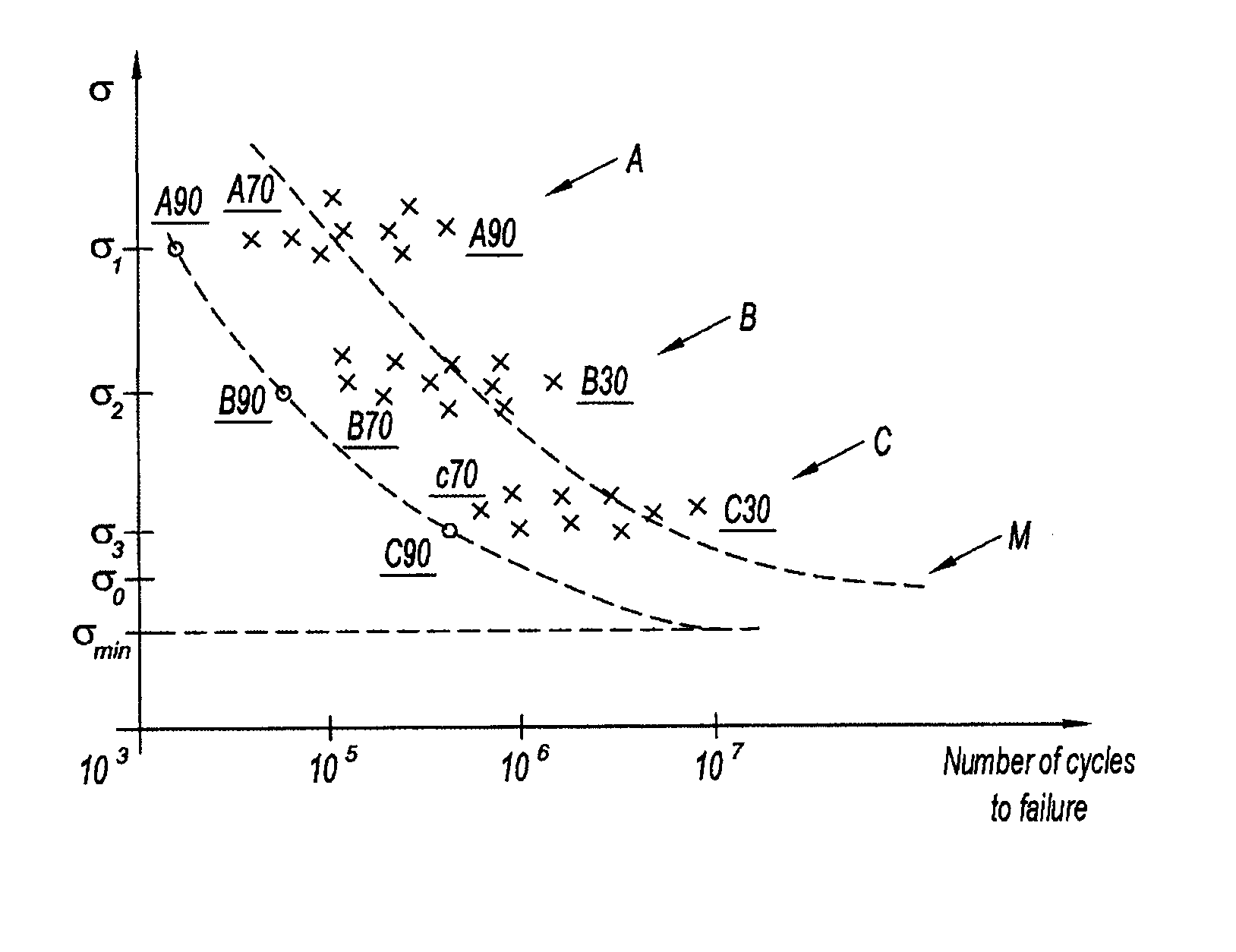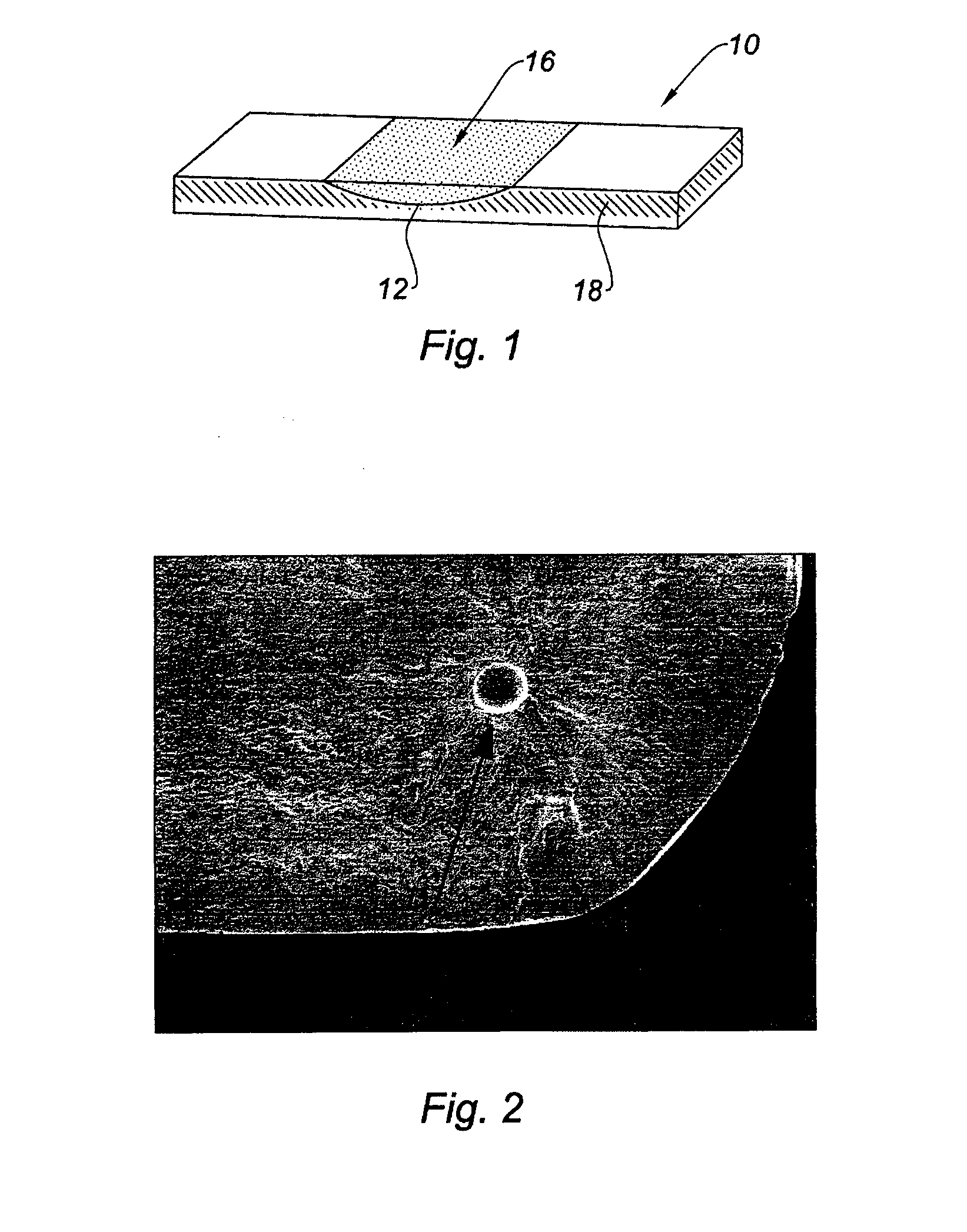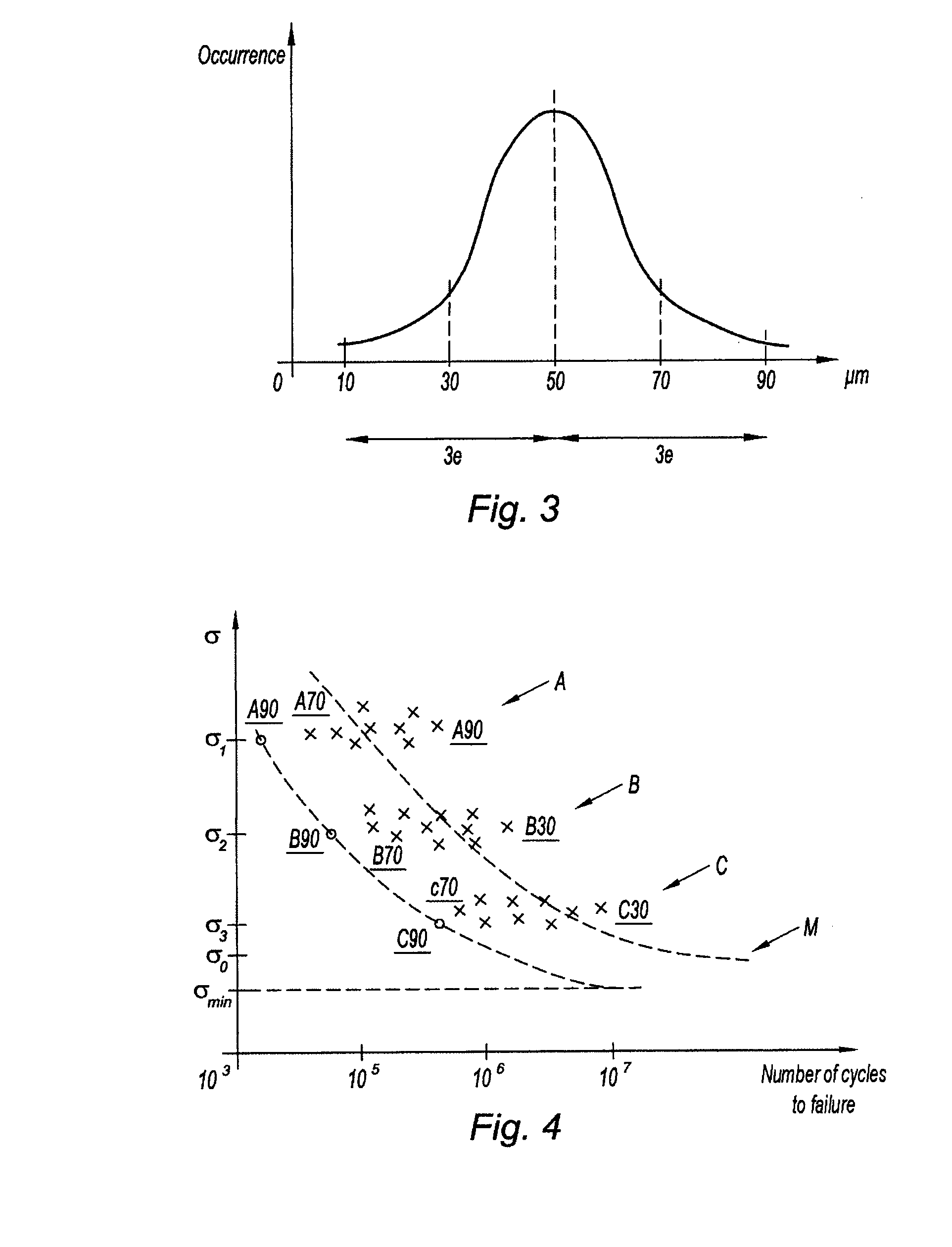Method for evaluating the fatigue strength of welded joints
a fatigue strength and joint technology, applied in the field of welding, can solve the problems of welded joint damage, metal melting or diffuse, and original defects of parts,
- Summary
- Abstract
- Description
- Claims
- Application Information
AI Technical Summary
Benefits of technology
Problems solved by technology
Method used
Image
Examples
Embodiment Construction
[0038]The specimens are produced for example using the following method. A cavity 12 is machined in a metal plate 10 of parallelepipedal shape and this cavity is filled with the alloy in question so as to form a welded joint 16. For the tests, resurfacing with TA6V alloy was carried out on Ti17 alloy plates.
[0039]The resurfacing operation is carried out using the same welding technique as that used for repairing the intended industrial parts. The same equipment is employed with the same welding parameters. The invention generally applies to welding modes that are fully controlled and can be defined by significant parameters. For deposition of metal with heating by means of a laser beam, the parameters are in particular those that characterize the beam, namely type, wavelength, focal length, beam homogeneity, energy density, distance to the target, shielding of the molten pool, etc.
[0040]The benefit of controlling the process stems from the observation whereby, upon solidifying, the ...
PUM
| Property | Measurement | Unit |
|---|---|---|
| Fraction | aaaaa | aaaaa |
| Fraction | aaaaa | aaaaa |
| Fraction | aaaaa | aaaaa |
Abstract
Description
Claims
Application Information
 Login to View More
Login to View More - R&D
- Intellectual Property
- Life Sciences
- Materials
- Tech Scout
- Unparalleled Data Quality
- Higher Quality Content
- 60% Fewer Hallucinations
Browse by: Latest US Patents, China's latest patents, Technical Efficacy Thesaurus, Application Domain, Technology Topic, Popular Technical Reports.
© 2025 PatSnap. All rights reserved.Legal|Privacy policy|Modern Slavery Act Transparency Statement|Sitemap|About US| Contact US: help@patsnap.com



